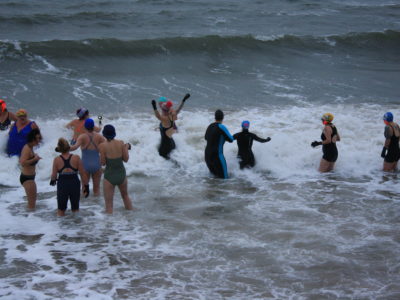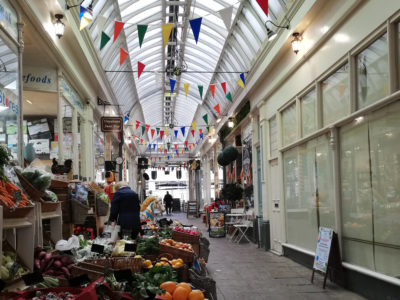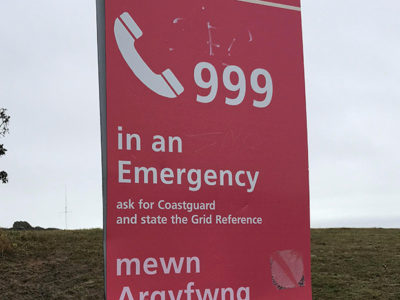AFTER more than 100 years of rescues and bringing people in peril home, the RNLI station at Barry is in need of some care itself.
Supporters of Barry Dock RNLI will shortly begin their campaign to raise money to build a new boathouse. Although their target is still being finalised, it is understood the amount of money required will be in the high six figures and fundraising activities will include a black tie dinner and a raft race for local businesses.
The station has been running since 1901, since the days when Barry was the largest port for coal exports in the world. Though the collieries are now closed, the station remains significant in providing coastguard services for the majority of the busy Bristol Channel.
Barry Dock currently has 25 fully trained crewmembers, including a fulltime coxswain and mechanic. They provide the only all-weather lifeboat on the main Channel, which takes a crew of seven, and two three-man inshore boats.
Additionally Barry Dock doubles up as a flood rescue base. The crew can be deployed at any time to anywhere in the UK or abroad – this winter, some of their members were sent up to assist with the flooding in Cumbria.
The lifeboat crews help out in all sorts of incidents, from people getting swept out to sea to damaged boats, stranded fishermen and heart attacks on shipping vessels. They’ll even save pets.
“If we can help, we will, and we really don’t want people going into the water after their pets,” said Dave Phillips, 47.
Dave has been a member of the Barry Dock crew for 19 years. He gave us a tour of the all-weather boat down in the dock, and explained the process that takes place before a lifeboat is launched.
All 25 members of the crew have a pager on them at all times. When a call comes in to the Coastguard, they send a request to the duty launching authority. The launching authority makes the decision and sends the page to all crew. Anyone who can respond does so immediately, and the coxswain picks a crew of the available members. The launch time averages about 10 minutes from the first page to the boat being out on the water.
Dave’s wife Abi is the Lifeboat Press Officer at Barry Dock. Her family is one of several locally that have been involved with the RNLI for decades. Her great uncle Frederick Searle was part of a team awarded with Medals for Gallantry after rescuing the crew of a French schooner in 1935, which ran aground on rocks in the Channel.
Today, all five members of the Phillips family – Abi, Dave, and their children Ben, 21, Sam, 16 and Katie, 15 – are involved with the Barry Dock RNLI.
Fundraiser Margaret McMillan is involved in raising awareness and encouraging people to volunteer with the RNLI. She is impressed with the contributions of young people to the organisation in particular.
“They come up with such different ideas. I think it makes a big difference to see what’s happening with the lifeboats as it’s happening. When you start to see the video clips of the crew going out I think it really inspires people to do something.”
The educational group, which Sam Phillips is a part of, has spoken to 9,000 people in the last 12 months. They go into schools and speak to the elderly, and try to raise awareness of water safety and the RNLI’s fundraising efforts.
John McAllister, 39, works full time as a paramedic with the Welsh Ambulance Service. He originally joined the crew in 1999, but moved away to London. He returned to Barry last year, and immediately rejoined the lifeboat crew.
“The benefit is that if somebody’s injured in a yacht or on an inaccessible beach, having a paramedic on the crew means we can start good casualty care as soon as possible and liaise properly with other services.”
All crew on the lifeboat service undergo an intensive casualty care training course. Unlike a standard first aid course, they are trained in the use of medical gases, and learn how to treat head and spinal injuries.
Mr McAllister also emphasised the role of the RNLI as a social hub for the community.
“Quite a few of the members are ex-forces, and we miss that camaraderie. We have crew dinners and the like, and there’s a social aspect to it. We’re giving something back to the community and we all enjoy it.”
RNLI Facts
- The RNLI was founded in 1824.
- It has saved over 141,000 lives since then.
- There are 237 operational lifeboat stations in the UK & ROI.
- One in 10 crewmembers have professional maritime experience.
- 95% of the organisation is made up of volunteers.
- The total volunteer crew is 4,700 people, with 349 lifeboats covering 19,000 miles of coastline.
- 94% of its income comes from fundraising and donations.
- The RNLI provides 24 hour search & rescue up to 100 miles out from the coast of the UK & ROI.
- On average, the RNLI launches 23 times a day, rescuing 24 people.
- The RNLI has international projects in Ghana, Tanzania, Sierra Leone, Bangladesh and the Philippines. These projects teach water safety to young people and train adults to save lives.
Lifeboat Facts:
- An all-weather lifeboat, like the one at Barry Dock, has a top speed of 25 knots (30mph).
- It is equipped to deal with severe gale force winds.
- The boat weighs 28 tonnes and costs £2.1m to build.
- At full speed, the boat’s 2500-horsepower engines use a gallon of diesel per minute.
- The boat can stay out for over four hours at a time.
- Barry Dock currently has one all-weather boat and two in-shore boats, and will be adding a midsize D-class boat within the next year.
- The Barry crew cover the Bristol Channel down to Mumbles and Ilfracombe.





